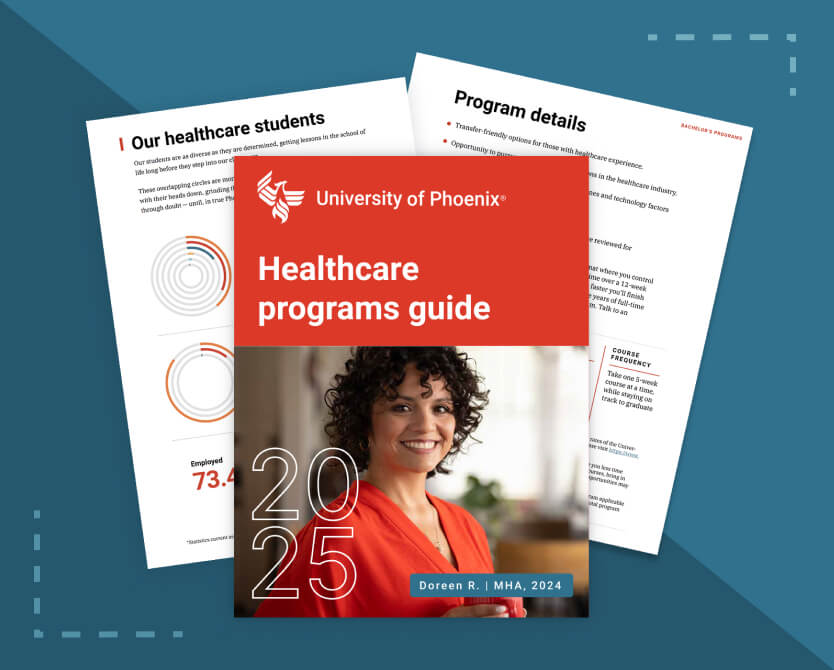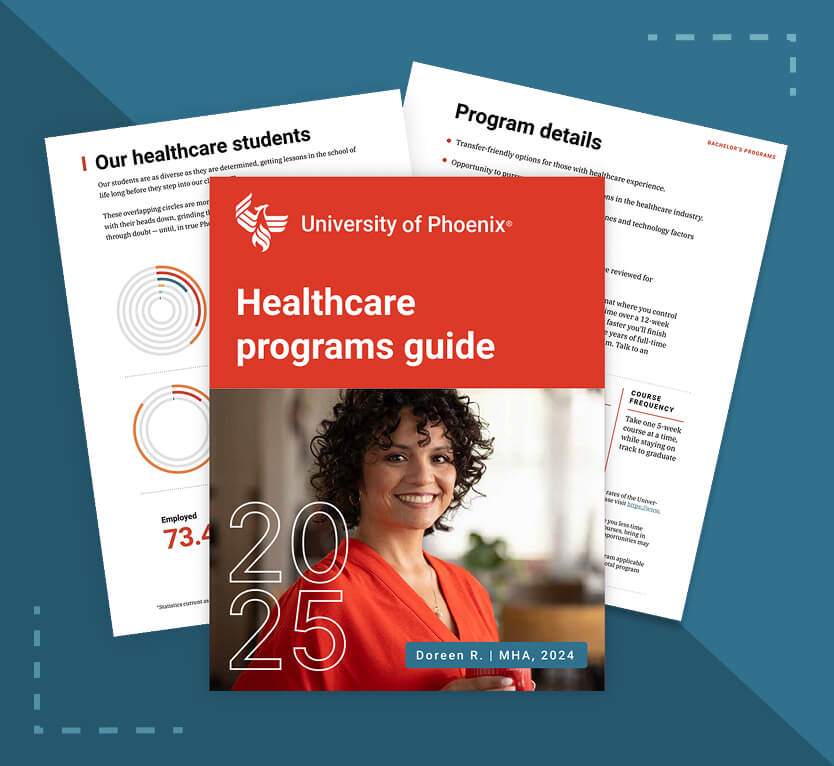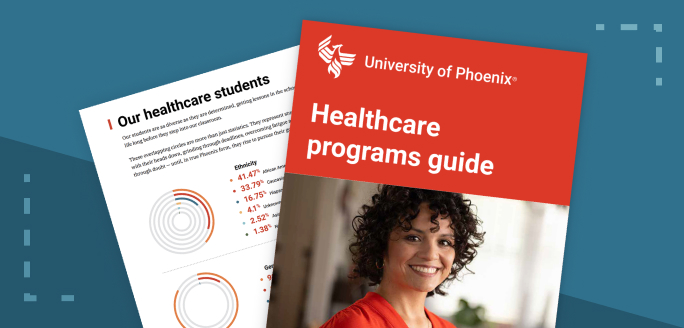Articles > Healthcare > What is Triple Aim healthcare?
What is Triple Aim healthcare?

Written by Michael Feder

Reviewed by Mark Jóhannsson, DHSc, MPH, Dean, College of Health Professions

Triple Aim healthcare is a framework designed in 2007 by the Institute for Healthcare Improvement (IHI). Integrated effectively, it has the power to transform healthcare, one facility at a time.
The Triple Aim healthcare framework
As the name suggests, the Triple Aim healthcare framework consists of three main components, which together are designed to optimize the performance of the healthcare system. These components are population health, patient experience and per capita cost of healthcare.
- Population health focuses on the health needs of the wider community. By homing in on steps like preventive medicine and education, the population can decrease its reliance on the healthcare system.
- Patient experience focuses on the level of service the patient receives when they do require health care.
- Cost per capita seeks to reduce the overall per capita cost of health care. The United States spends more on medical care per person than anywhere else in the world, and cost affects access and quality of care in many communities.
Here’s a closer look at how this framework seeks to improve the healthcare system in the United States.
Ultimately, the goal is to improve the overall health of the population while reducing the costs of medical care. The framework is not necessarily three different goals. Instead, the components should be seen as three steps to approach simultaneously to achieve the same goal.
In a country with an extraordinarily expensive healthcare system, that might sound unachievable. Triple Aim seeks to address this challenge by breaking down improvements into small, doable steps that are easy to measure.
Improving the patient experience
The first facet of Triple Aim is to improve all aspects of the patient experience. In addition to emphasizing that organizations have the right skills to bring about positive outcomes, this step calls for systems to be in place that evaluate the experience and implement changes for improvement.
Sometimes these improvements involve making the healthcare system, which many people have trouble navigating, more user-friendly. Initiatives may include care coordination and communication with patients.
Improvements also focus on compliance with healthcare regulations regarding privacy as medical facilities embrace the convenience of current technology.
Reducing costs
As the population ages and the number of people in need of regular health care increases, reducing costs becomes increasingly important. Among the 11 high-income countries evaluated as part of a Commonwealth Fund analysis of Organisation for Economic Cooperation and Development health data, the United States spent more on health care but continued to face significant challenges, such as the lowest life expectancy and the highest suicide rate.
Cost reduction in Triple Aim has two components. The first involves finding ways to decrease the costs of care in medical facilities, of medications and of treatments.
The second cost-reduction factor is to focus on prevention. By focusing on giving people the necessary resources for good health, it works to mitigate the need for health care as people age.
Improving population health
Improving population health goes hand in hand with health care cost reduction and improving patient experience. The goal of this Triple Aim aspect involves understanding the public health needs of the population as well as the health challenges they face.
For example, social factors can affect health when it comes to mental health, communicable diseases and preventable conditions like diabetes.
The population health component of Triple Aim calls for improved communication and outreach. It also involves researching the factors causing the illnesses and conditions within a given community. Using public health efforts to help prevent illnesses and conditions prevalent in a community can go a long way toward reducing health care costs and improving care for the people who do need medical assistance.
Challenges with Triple Aim healthcare
This framework has achievable and logical goals that can reduce costs and improve experience and outcomes. However, the challenges associated with implementing the approach have slowed down its popularity.
Here’s a look at some of the most common pitfalls healthcare organizations encounter:
- Implementation may increase medical staff burnout. Medical staff burnout is a common issue in the U.S. healthcare system, and some worry Triple Aim would exacerbate it. Today, burnout is caused by understaffing at medical facilities, unrealistic expectations from administrators. In addition to a lack of energy and an increased frequency of mistakes, physician and nursing staff members who experience burnout may develop health problems.
- The framework doesn’t do enough to address disparities within the healthcare system. Wealthier patients or individuals with comprehensive insurance may receive better care and referrals to specialists without hesitation. Meanwhile, patients with little to no insurance coverage sometimes avoid essential medical care due to the expense.
- Politics and health care don’t always mix. Some politicians focus on issues such as high prices for medication or insurance premiums during election season, but once in office, they fail to bring lasting changes that solve these issues.
- Misperceptions can drive dissatisfaction. Some healthcare workers perceive goals as solely focused on patients and the public. A new philosophy, like that of the so-called Quadruple Aim, includes more support for workers.
Of course, some of these drawbacks are a mixture of actual challenges and misperceptions. Luckily, certain benefits directly address some of these challenges with solutions.
Benefits of Triple Aim
The Triple Aim philosophy strives to improve the healthcare system by making it easier to navigate and more effective. Here are some additional potential benefits of this public health philosophy.
- It streamlines care. Because the system focuses on prevention, community members can get most of their medical needs met through their primary care provider. With one primary contact, it is easier for people to navigate the healthcare system.
- It leads to an understanding of a community's specific health care needs. It helps medical organizations identify problems in the community before they escalate into health concerns.
- Medical providers can understand how to best serve the community. When the public can receive necessary preventive care, it decreases the workload for service providers: People with chronic illnesses can better manage them and diminish their need for more invasive or emergency care.
- The community-based approach allows healthcare organizations to work with community institutions, such as local businesses, schools and places of worship, to address health care issues that affect the community. This type of outreach can lower the overall cost of health care and involve other trusted institutions in the process.
The philosophy is most effective when implemented correctly in a community.
Implementing the framework
Triple Aim requires that all three principles be incorporated in medical organizations' daily work and operational policies. The effort can start even before healthcare providers see their first patient.
By ingraining the approach in healthcare degree programs, clinicians, technicians and administrators will already have an understanding of the benefits and public-health-centered approach of Triple Aim when they begin their professional duties.
Providers need to understand how the patient-centered philosophy can make their lives easier too. Most of all, hospital and clinic leadership needs to embrace public-focused health care for it to become effective in a community. Making Triple Aim part of health administration degree programs can help decision-makers understand its benefits.
This implementation also requires that healthcare organizations attract skilled nurses, doctors and administrators to facilities that incorporate this health care approach. It may also require a more diverse nursing workforce with providers who can perform their jobs in nontraditional settings and can reach out to underserved members of the community.
Integrated effectively, Triple Aim has the power to transform healthcare, one facility at a time.
Learn about Triple Aim healthcare and other frameworks
If learning more about Triple Aim healthcare and other frameworks interest you, University of Phoenix offers healthcare programs, including a master’s in compliance online.
Contact University of Phoenix for more information.

ABOUT THE AUTHOR
A graduate of Johns Hopkins University and its Writing Seminars program and winner of the Stephen A. Dixon Literary Prize, Michael Feder brings an eye for detail and a passion for research to every article he writes. His academic and professional background includes experience in marketing, content development, script writing and SEO. Today, he works as a multimedia specialist at University of Phoenix where he covers a variety of topics ranging from healthcare to IT.

ABOUT THE REVIEWER
Mark Jóhannsson is the Dean of the College of Health Professions. He has a career spanning over 35 years of healthcare management, public health practice, higher education administration, teaching and clinical/behavioral research within corporate, community and academic settings. He has served as both an educational and keynote speaker, and he has been published in a variety of peer-reviewed and periodic literature.
This article has been vetted by University of Phoenix's editorial advisory committee.
Read more about our editorial process.




Get your free Healthcare programs guide
Explore our healthcare degrees and certificates - 100% of our programs are aligned to career-relevant skills.
You’re making moves!
This guide is loaded with answers. Download it now or get it from your inbox. Questions? We’re just a call or click away.
Get your free healthcare programs guide. Please enter your first and last name.


